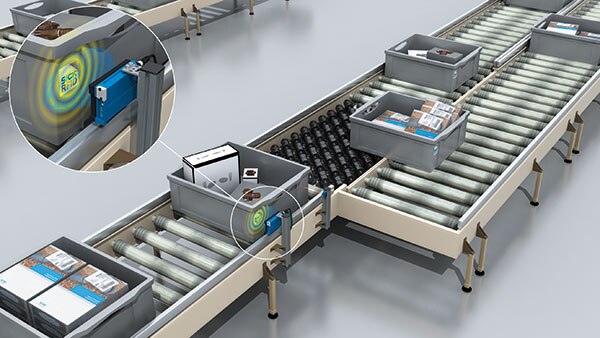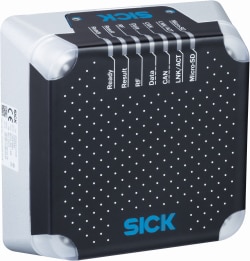On the path to establishing networked production processes, the focus up to now has been on optimizing physical production and logistics processes. Thanks to the latest IT technologies, it is now possible to represent these processes and goods flows virtually. With the help of RFID technology, the status data for products or transport containers is recorded automatically at Bosch. The data exchange takes place in real time and extends beyond company boundaries to facilitate end-to-end optimization of production and supply networks.
Virtual representation of the kanban system
A kanban system is generally controlled by the final stage of production: If the level of stock in the final stage of production falls short of a defined minimum value, a message is sent accordingly to the upstream production unit or warehouse, where new goods can be prepared. As part of this process, kanban cards ensure that consumption information is passed on. As soon as a material has been used up, the card is placed in a collection box. The cards are collected and distributed regularly to the areas that need to prepare the required material. In the past, the physical material flow was transferred to an IT system manually, which required a great deal of time and effort. The margin for error was high, the data was never up to date, and the information flow wasnt synchronized with the material flow. Today, thanks to RFID technology and software-based data transfer, things are quite different, as each kanban card is fitted with a transponder.
RFID technology for error-free data acquisition
To begin with, Bosch started operating in several plants around the world with high-frequency labels (HF technology), which involved the use of the RFH620 from SICK among other devices.
 Application example with RFH620
Application example with RFH620
In the future, Bosch plans to use the compact RFU620 - a UHF RFID read/write device - in its production logistics processes. The reader is attached to shelves, detects kanban cards during the removal process, and transmits the card data directly to the SAP system via a middleware layer. In this way, the replenishment signal is generated in real time as soon as the goods are taken, and the data verification process takes place at the same time. All necessary SAP actions - such as changing statuses, creating replenishment elements, documenting materials, and issuing receipts - take place automatically.
 RFU620 UHF RFID reade/write device
RFU620 UHF RFID reade/write device
In this regard, the requirements for the RFU620 are demanding. The data acquisition process must be simple and reliable to establish a good database. Easy-to-read LEDs on the RFID sensor provide the user with clear feedback as soon as the plausibility of the SAP process step has been checked. The system does not replace kanban cards, but rather provides a 1:1 mapping in SAP to facilitate the virtual representation of the entire process in real time. This not only leads to significantly more efficient processes, but also reduces stock levels and even increases the availability of shelf space in the production process.
- Product information: RFH6xx, RFU62x, RFU63x
- Produktportfolio: Radio Frequency Identification (RFID)
- Customer information: Bosch

